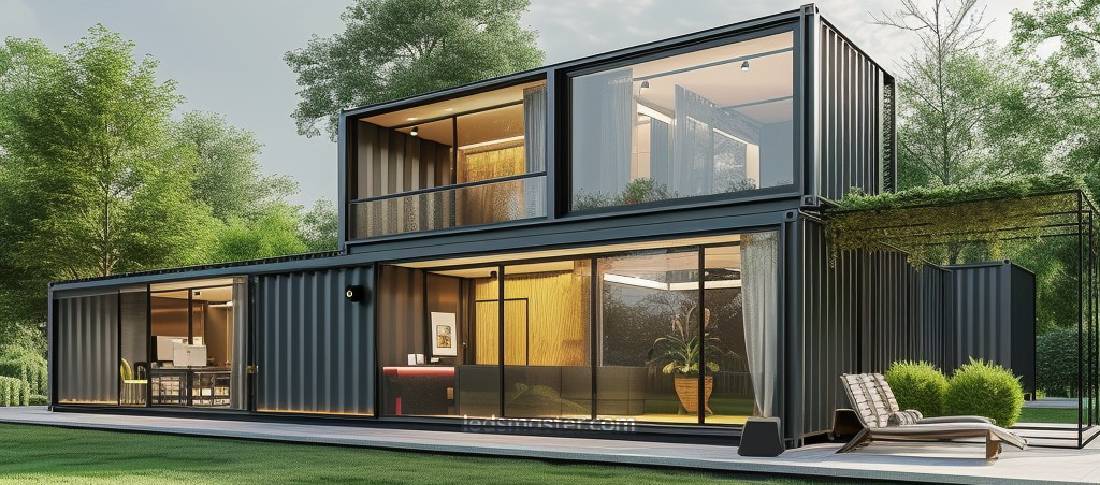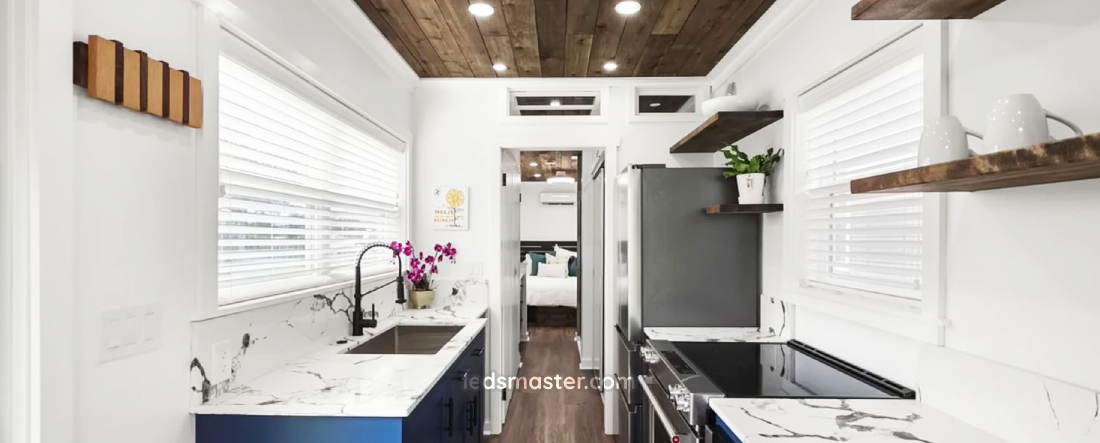Discover our Shipping Container Lighting solutions—designed for efficiency and minimal heat emission. Ideal for container conversions into different areas, our lights ensure optimal brightness with cool operation.
Explore our comprehensive range of Shipping Container Lighting solutions, meticulously crafted to illuminate and enhance the functionality of shipping containers across diverse applications. Whether you’re converting a container into a workspace, retail outlet, or storage facility, our lighting products are engineered to deliver superior visibility, energy efficiency, and durability.
Get your complimentary lighting design today
Converting shipping containers into functional living or working spaces requires more than just structural modifications—it demands careful attention to lighting. Proper lighting not only enhances visibility but also plays a critical role in energy efficiency, heat management, and overall comfort. This article delves into key considerations for shipping container lighting, including efficiency and energy savings, heat emission, brightness and coverage, and installation compatibility.
Table of Contents
ToggleGiven the confined nature of shipping containers, energy-efficient lighting ensures that power usage remains low without sacrificing the quality of light. Modern solutions primarily rely on advanced LED (Light Emitting Diode) technology, which offers significant advantages over traditional incandescent or fluorescent bulbs.
LED lights are renowned for their ability to convert a higher percentage of electrical energy into visible light, which translates to reduced electricity consumption. This means lower operational costs over the lifespan of the lighting system, making LEDs a cost-effective and sustainable option for container conversions.
In addition to their efficiency, LED lights often come with features like dimmability and smart controls. These functions allow users to customize light levels based on real-time needs, further enhancing energy savings.
LED fixtures also last significantly longer than traditional lighting, which reduces the need for frequent replacements. This longevity not only lowers maintenance costs but also reduces waste, contributing to a more sustainable project by minimizing the disposal of used bulbs.

One of the major challenges in shipping container lighting is managing heat emission. In such compact spaces, excess heat can quickly affect comfort and safety. Traditional lighting solutions, like incandescent bulbs, tend to emit significant amounts of heat, which can lead to an uncomfortable environment and higher cooling demands.
In contrast, LED lights generate very little heat during operation. This minimal heat emission not only keeps the container cooler but also alleviates the load on air conditioning systems, making it easier to maintain a comfortable internal temperature. This is particularly important in climate-controlled containers used for living spaces or temperature-sensitive storage.
The reduced operating temperatures of LED lights also enhance safety by lowering the risk of burns or overheating surrounding materials. This makes LED lighting ideal for human-occupied spaces or containers housing delicate goods.
Shipping containers, by design, are long, narrow, and enclosed spaces with limited natural light, making effective artificial lighting essential for functionality. Whether these containers are used as living quarters, workspaces, or commercial pop-up shops, proper illumination ensures usability and comfort. Achieving uniform lighting across the entire interior is key, as inadequate light in certain areas can lead to uninviting or inefficient spaces.
Given the structural constraints of containers, ensuring that light reaches every corner can be challenging. Traditional lighting solutions often fail to provide even coverage, leaving darker areas where shadows can disrupt functionality. LED lighting solutions, however, excel in their ability to offer uniform brightness, overcoming these limitations by providing consistent light output and reducing shadowed areas. This makes LED lights an ideal choice for shipping containers, where every inch of space needs to be well-lit to create a practical and welcoming environment.
The brightness of lighting is commonly measured in lumens, a unit that quantifies the total amount of visible light emitted by a source. In container applications, the need for high-lumen output is paramount, as confined spaces demand intense, focused lighting to make the most of their compact dimensions. Modern LED lighting fixtures are designed to provide high lumens per watt, which means that they deliver more light using less energy compared to traditional incandescent or fluorescent lights.
For example, a standard 10-watt LED bulb can produce the same amount of light as a 60-watt incandescent bulb, highlighting the energy efficiency and brightness of LEDs. This high lumen output is critical for ensuring that even small container spaces, such as bathrooms or storage areas, are adequately illuminated, creating a safer and more comfortable environment.
Containers repurposed for different functions—such as offices, retail spaces, or living environments—require lighting that caters to specific tasks. High-lumen LED lighting ensures that these spaces remain fully functional, whether the task at hand is reading, working, or displaying merchandise. For instance, retail containers benefit from bright, focused light that highlights products effectively, while residential containers require softer lighting to create a comfortable living environment.

In addition to providing high brightness, LED lights offer a range of color temperatures, which affect the overall ambiance of a space. Color temperature is measured in Kelvin (K) and ranges from warm tones (around 2700K) to cool, daylight-like tones (above 5000K). For container environments, the ability to customize lighting color temperature is a significant advantage, allowing the space to be tailored to its specific purpose.
For instance, a container used as a living space may benefit from warmer light (2700K to 3000K) to create a cozy, inviting atmosphere similar to traditional home lighting. This warmer tone can make the space feel more comfortable and homelike, perfect for residential or hospitality containers. On the other hand, cooler light (4000K to 5000K), which mimics natural daylight, is better suited for workspaces, offices, or creative studios, as it enhances focus and productivity.
For retail containers, color temperature can influence how products are perceived by customers. Cooler white light can make the space feel modern and sleek, highlighting merchandise with clarity, while warmer lighting can create a more intimate and relaxed shopping experience, ideal for boutique or artisanal retail spaces.
Some modern LED systems also include smart features, allowing users to adjust the color temperature dynamically. This is particularly beneficial in multi-functional containers that serve different purposes throughout the day. For example, a container office might need cool lighting during the day to promote productivity and warmer lighting in the evening for a more relaxed ambiance. This flexibility enables container owners to optimize their lighting settings according to changing needs.
Shipping containers are often used in a variety of environments, from urban settings with easy access to the power grid to remote locations where electricity may be limited or unavailable. One of the advantages of LED lighting is its compatibility with a wide range of power sources. LED lights can be installed in containers powered by standard AC outlets, but they can also operate efficiently on DC power systems, such as those found in solar-powered or off-grid setups.
This versatility allows container conversions to take place in remote or mobile settings, such as rural housing projects, emergency shelters, or off-grid vacation homes. Whether the container is located in a city with full infrastructure or in a remote area relying on solar energy, LED lights can adapt to the available power supply, making them ideal for diverse applications.
Another key feature of LED lighting is the compact and lightweight design of modern fixtures. Shipping containers, with their limited interior space, require lighting solutions that don’t take up unnecessary room. LED lights, thanks to their sleek design and small form factor, can be easily installed in even the tightest of spaces without obstructing the overall layout.
Their minimal footprint allows for strategic placement, ensuring optimal light distribution while maintaining the container’s intended functionality. Whether placed on ceilings, walls, or even integrated into shelving and workstations, LED lights can be positioned to maximize space without compromising on light quality.
For containers used as office spaces, light fixtures can be mounted in locations that optimize lighting for workstations, reducing eye strain and enhancing productivity. In retail spaces, LED strip lighting can be installed under shelves or displays, highlighting products without encroaching on valuable floor space. In residential containers, compact fixtures can be integrated into kitchen cabinetry or bedroom walls to provide soft, ambient lighting without cluttering the room.
The adaptability of LED lighting is one of its greatest strengths in shipping container conversions. Whether the container is being used as a temporary event space, a permanent residence, or a mobile office, LED lighting can be customized to meet specific needs. This versatility makes LED lights the ideal solution for a wide range of container projects.
For instance, containers used as pop-up retail shops may benefit from adjustable, spotlight-style LED lights to create dramatic displays and draw attention to key products. In contrast, containers serving as remote, off-grid homes may require solar-powered LED systems that offer steady, reliable light without requiring access to the electrical grid.
LED lights are also built to withstand the rugged conditions often faced by shipping containers. Since containers are frequently used in outdoor or harsh environments, such as construction sites or disaster relief areas, the durability of LED fixtures is a significant benefit. Many LED lights are weatherproof, impact-resistant, and capable of functioning in a wide range of temperatures, ensuring reliable performance regardless of the environment.
Selecting the right lighting for shipping containers involves more than just achieving adequate illumination—it’s about enhancing efficiency, optimizing energy use, and ensuring comfort. LED technology emerges as the best option for shipping container lighting, offering superior efficiency, minimal heat emission, excellent brightness, and easy installation.
As the demand for sustainable and adaptable spaces grows, choosing high-quality LED lighting solutions not only improves the functionality of shipping containers but also promotes energy savings and environmental responsibility. By investing in LED shipping container lights, stakeholders can maximize the potential of these versatile structures while minimizing their environmental footprint.